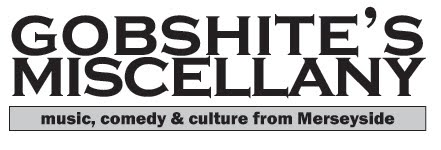
(picture by Michael Romanos)
HIPPY MYSTIC and curmudgeonly 50s pop cultural warrior Van Morrison is rightly lauded as one of the finest songwriters of his generation or any other. A troubled Celtic troubadour locked in the fug of 1970s Northern California despite living in North Down for many years, his style is enigmatic and difficult to emulate. Or is it?
Intro
Strum malevolently... on a ukulele. A complex circular chord structure of C, F & G is the best framework.
Verse
It is vital to set up the essentially utopian nature of the past while establishing the essential Celtic nature of the piece, I suggest something like:
“Way back, back, back, way back/
Way back/ back in days gone by,
At this point add a reference to a semi-obscure jazz/ blues/ country figure whose American roots authenticity clashes with Celtic soul of the initial lamentation. Something like:
“When Big Joe Turner rumbled from the radio/
Woody and Wolf and Buck Wheat Zydeco
(Ignore the fact that Big Joe Turner, Woody Guthrie, Howling Wolf or Buckwheat ever, erupted from any Ulster Radio)
Now, despite the fact that the song has been sung in a mid-Atlantic drawl thus far, one needs now to insert a couple of geographically and colloquially specific Ulster references in a VERY thick East Belfast accent. Perhaps:
“I was eatin’ a pasty bap and Paris buns/
By the cinema down the Creggagh Road”
Another temporal reference (passing seasons, perhaps) and one more matriarchal reference, and it's nearly time for the chorus. Maybe:
“Now there’s brown leaves rustling in the trees/
I can still see mama’s bitter tears for me”
Chorus
Move towards a self piteous lament for how crap it is being successful, but, most importantly, link all three previous factors utilised in the verse: reminiscence, Northern Ireland psycho-geography and perhaps a hippyish pop cultural reference.
Pay no attention to scan or syllable structure. Scat sing like a mother lover.
‘Not as good now as it was then (kick it)
Dharma Bums and Kerouac’s Zen (uh huh)
Flute bands and Woody Guthrie (C’mon)
Mama , mama, Lord, lord, lordy lord,
Why am I so lonely?’
Break now for a gratuitous harmonica and/or saxophone solo augmented by the most under valued but expensive session band money can buy.
Finish with a dash of Georgie Fame and/or Brian Kennedy harmony.
Repeat for 4mins 56secs





